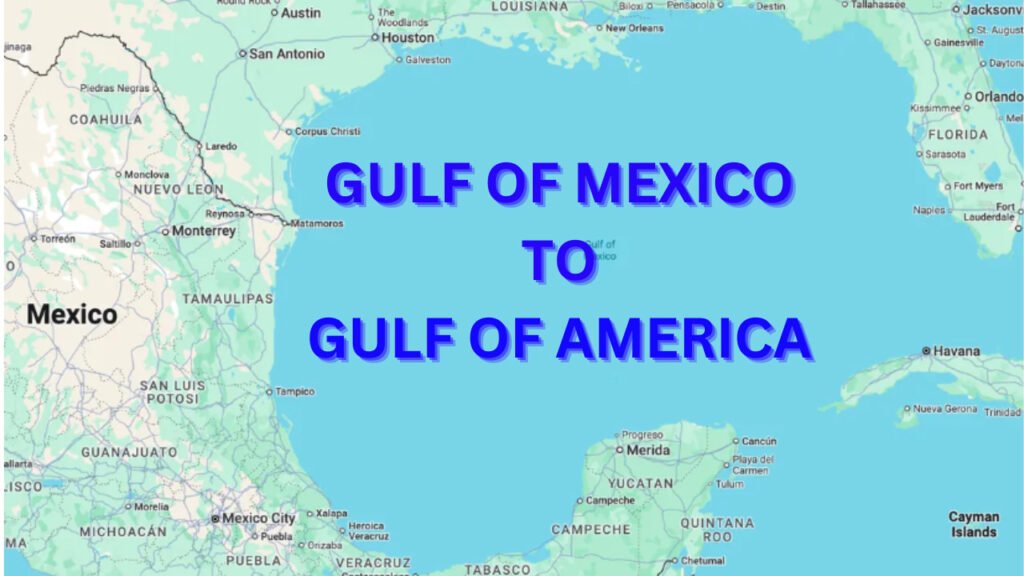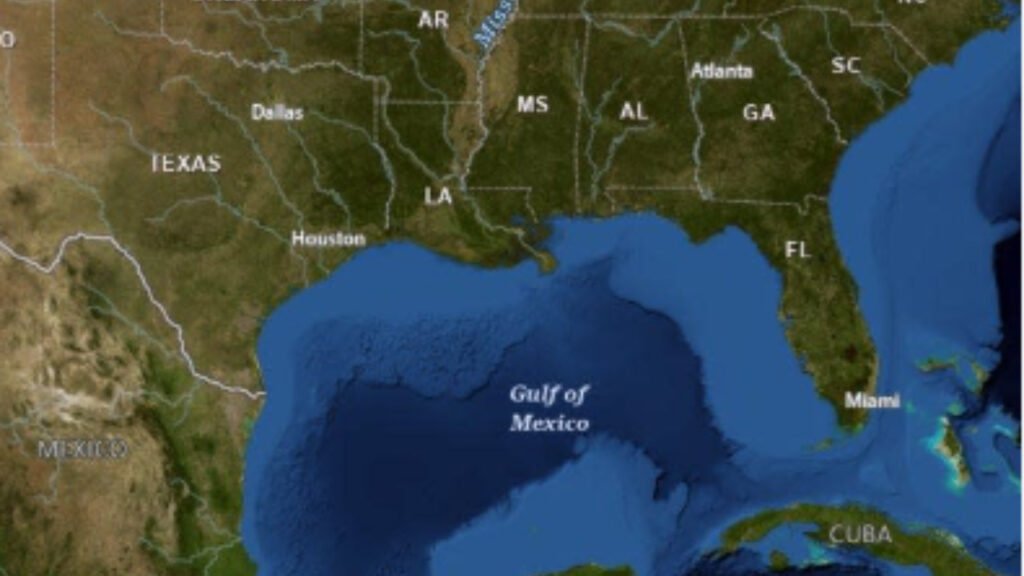The latest Google Maps Update 2025: ‘Gulf of America’ Replaces ‘Gulf of Mexico’ for U.S. Users has sparked widespread discussion and controversy across the globe. The sudden renaming of the iconic Gulf of Mexico to the Gulf of America has taken users by surprise, with many questioning the reasoning and implications behind this significant change. In this blog, we will explore what this update means, why it happened, and how it impacts geography, politics, and the daily lives of Google Maps users.
Table of Contents
The Google Maps Update 2025: ‘Gulf of America’ Replaces ‘Gulf of Mexico’ for U.S. Users
In a surprising move, Google has rolled out its Google Maps Update 2025: ‘Gulf of America’ Replaces ‘Gulf of Mexico’ for U.S. Users across all devices and platforms in the United States. When users search for the Gulf of Mexico on Google Maps within U.S. territories, they are now greeted with the name “Gulf of America” instead. This change has led to a wave of reactions on social media, with many users expressing confusion and concern over the unexpected shift in geographical nomenclature.
Why Did Google Change the Name to Gulf of America?
The Google Maps Update 2025: ‘Gulf of America’ Replaces ‘Gulf of Mexico’ for U.S. Users is reportedly a result of political and cultural discussions regarding U.S. sovereignty and historical ties with the Gulf region. Some believe that the renaming aligns with efforts to emphasise American influence over the waters bordering the southern states. Others argue that it is part of a broader movement to reshape geopolitical perspectives in digital maps and online content.
While Google has not officially confirmed the exact reasoning behind the Google Maps Update 2025: ‘Gulf of America’ Replaces ‘Gulf of Mexico’ for U.S. Users, experts speculate that it could be influenced by government policies, user feedback, or even corporate interests seeking to redefine regional identity.
Impact on Geography and Education
One of the major concerns regarding the Google Maps Update 2025: ‘Gulf of America’ Replaces ‘Gulf of Mexico’ for U.S. Users is its effect on geography education. Students and educators rely on Google Maps as a primary resource for learning about world geography. This sudden name change could create confusion, especially for those outside the U.S. who still recognise the traditional name, Gulf of Mexico.
Many educators have expressed frustration over the change, noting that Google Maps Update 2025: ‘Gulf of America’ Replaces ‘Gulf of Mexico’ for U.S. Users disrupts historical and scientific accuracy. While digital maps evolve over time, such drastic alterations to widely recognised geographic names raise questions about the credibility and reliability of online mapping services.
Political and Diplomatic Reactions
The Google Maps Update 2025: ‘Gulf of America’ Replaces ‘Gulf of Mexico’ for U.S. Users has not gone unnoticed by the Mexican government. Officials in Mexico have criticised the move, calling it an unnecessary alteration of a historically significant name. Some have even urged Google to revert the change, citing diplomatic concerns and the potential for misinformation.
In the United States, the name change has been met with mixed reactions. Some nationalist groups have welcomed the update, seeing it as a reaffirmation of American identity. Others, however, have criticised the move, arguing that it disregards historical and international perspectives.

Public Response to the Google Maps Update 2025
The public reaction to the Google Maps Update 2025: ‘Gulf of America’ Replaces ‘Gulf of Mexico’ for U.S. Users has been polarising. Social media platforms have been flooded with debates, memes, and petitions calling for either the reversal or support of the change. Some users have taken to Twitter and Reddit to express their frustration, while others have embraced the new name as a symbolic gesture of American pride.
Google has yet to respond to the overwhelming feedback, leaving users wondering whether the name change is permanent or if adjustments will be made in future updates.
The Role of Digital Maps in Shaping Perception
The Google Maps Update 2025: ‘Gulf of America’ Replaces ‘Gulf of Mexico’ for U.S. Users highlights the power of digital platforms in shaping public perception of geography and history. As one of the most widely used mapping services globally, Google Maps plays a crucial role in how people understand and interact with the world. A simple name change can have far-reaching consequences, influencing not only digital navigation but also cultural and political discussions.
This update raises important questions about the responsibility of tech companies in maintaining factual accuracy and respecting historical contexts when making modifications to widely recognised geographic names.
Will Google Reverse the Change?
As discussions around the Google Maps Update 2025: ‘Gulf of America’ Replaces ‘Gulf of Mexico’ for U.S. Users continue, the big question remains: Will Google reverse the change? Historically, Google has adjusted or reverted controversial updates based on user feedback and government pressures. If backlash continues to grow, there is a possibility that the company may reconsider its decision.
For now, users outside the U.S. still see the traditional “Gulf of Mexico” name on Google Maps, indicating that the update is region-specific. Whether this change will extend to other countries or be modified in the future remains uncertain.

Conclusion
The Google Maps Update 2025: ‘Gulf of America’ Replaces ‘Gulf of Mexico’ for U.S. Users has sparked debates on geography, politics, and digital influence. While some view it as a symbolic assertion of American identity, others see it as an unnecessary and misleading alteration of a historically recognised name. As users adapt to this change, it remains to be seen whether Google will stand by its decision or reconsider the update based on global feedback.
Regardless of the outcome, this incident underscores the immense power that digital platforms hold in shaping public perception, raising critical discussions about the intersection of technology, history, and international relations.
